LP: Tell me about your early childhood... were you already drawing during the early years of your life?
JB: Yeah, I was drawing at three... for some reason I drew bicycles... with all the wheels and the spokes and pedals. I was always the 'artist' in the school. My ability wasn't really creative; rather, I had the ability to copy something - anything. My teacher in 2nd or 3rd grade would put a picture of a dog or something on the wall and say "draw the dog." Well I drew THAT particular dog! I don't know if it was eye-hand coordination or what.
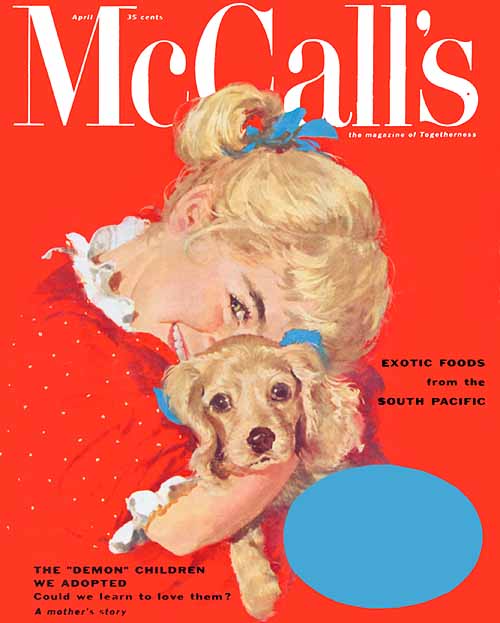
When I got into high school I had an assignment for a mechanical drawing class which was a freehand drawing of a very complicated gear mechanism. When I brought that drawing in the teacher said, "You didn't draw that." and he failed me! I said, "What are you talking about?" He said, "You didn't draw this!" I said, "I'll see you after basketball practice... give me any kind of assignment and I'll draw it for you."
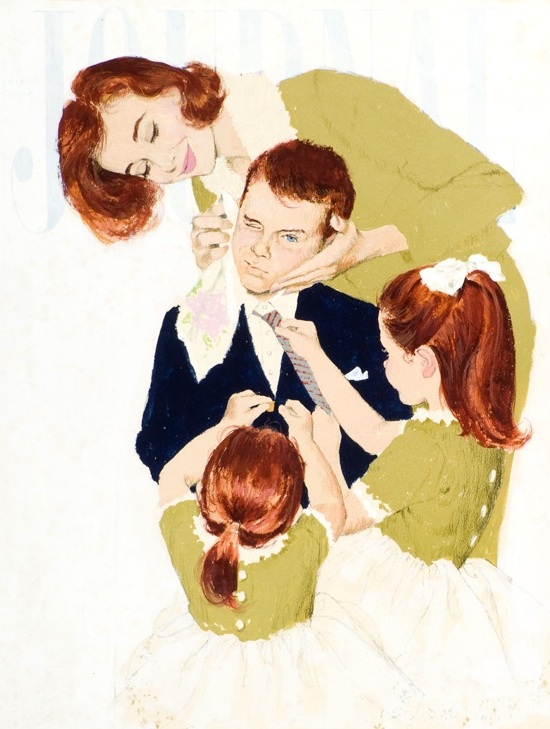
So we did that. I sat down and he gave me this much more complicated gear thing. I took about and hour and a half or so, and I drew it perfectly. You know that sonofabitch would only give me a B on it? [we both laugh] It was exact, but he just couldn't take it that he was wrong about me. This was in my sophomore or junior year in high school. I was taking all the art I could get, including mechanical drawing.
LP: How about your parents; were they supportive of that?
JB: Very much so. I guess it was in junior year... we had a kind of 'Career Day' thing and they had printed up a list of all these professions and their annual salary. And at the top of the list, above lawyer and doctor and businessman... was illustrator!
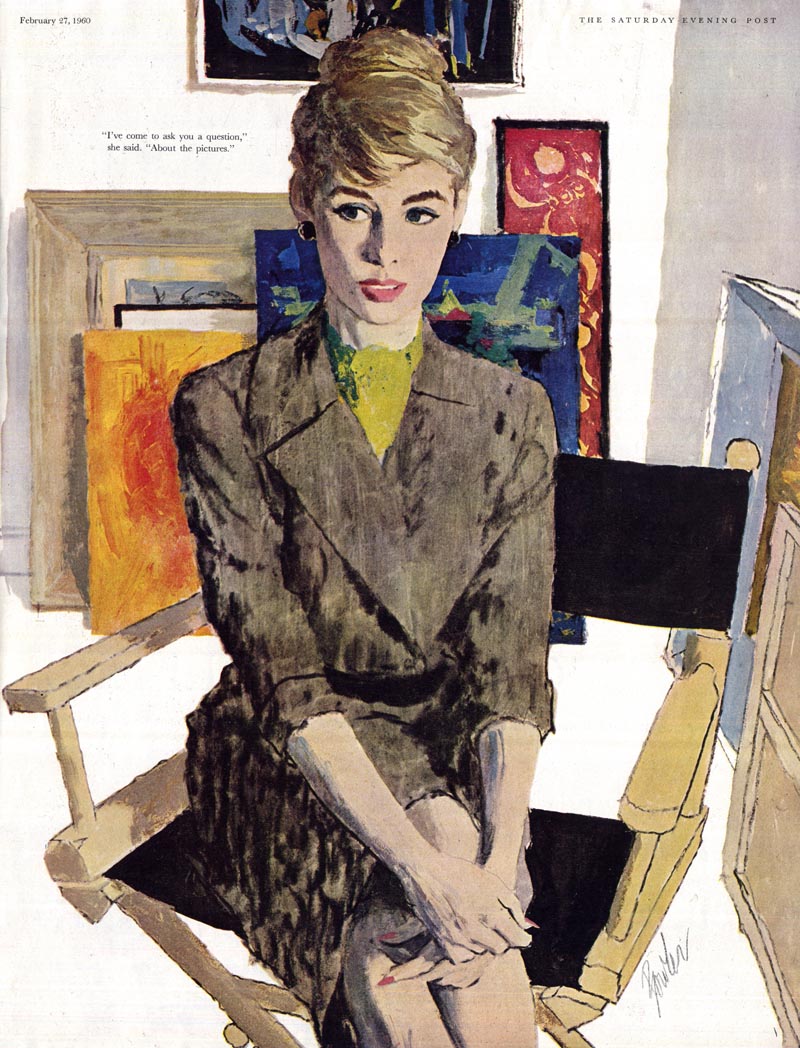
"One hundred thousand dollars" it said. Of course this was 1943/44 or so and they were talking about a handful of the best illustrators in the business making that kind of money. Rockwell and a few others.
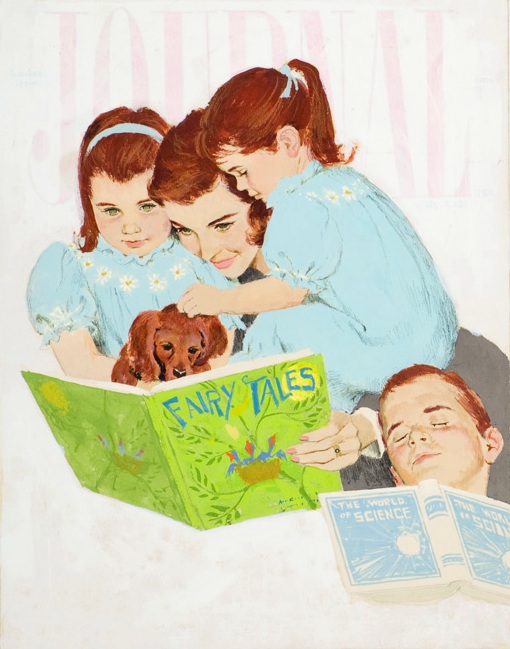
Well I ran all the way home and showed my parents the list and said, "See? I told you." And they sort of sighed a great sigh of relief. Because we didn't have any money at all - especially for college.
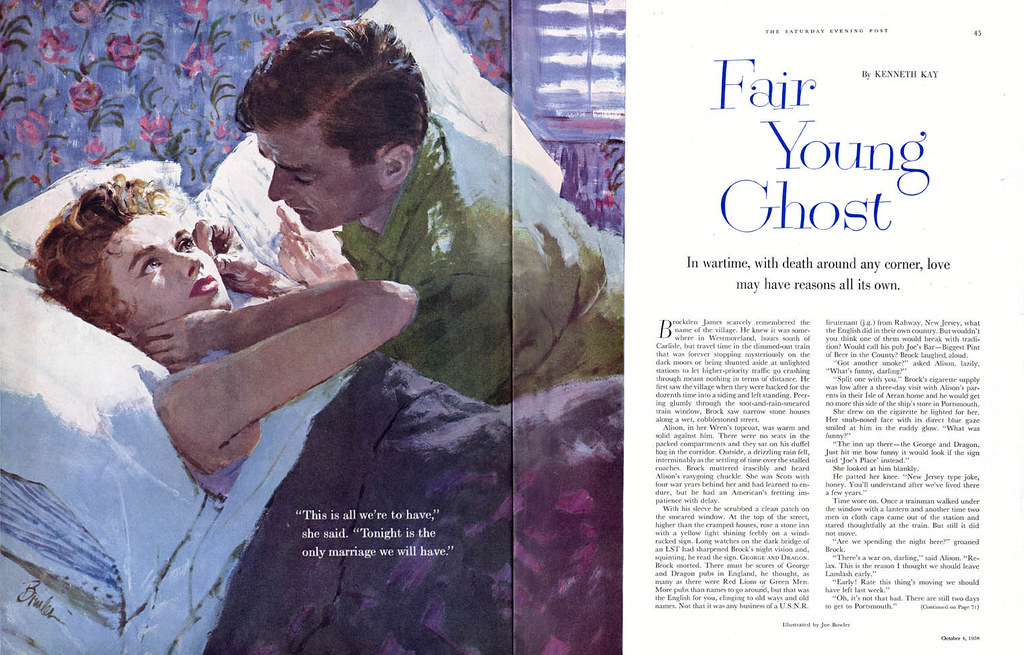
So I went right out of high school and my father, who worked in real estate in New York City, one of his clients was an artist representative on Park Avenue... so my dad got me a job as an errand boy in this Barry Stephens Art Agency. My introduction to the illustration business was through picking up and delivering drawings and paintings for all of his artists...
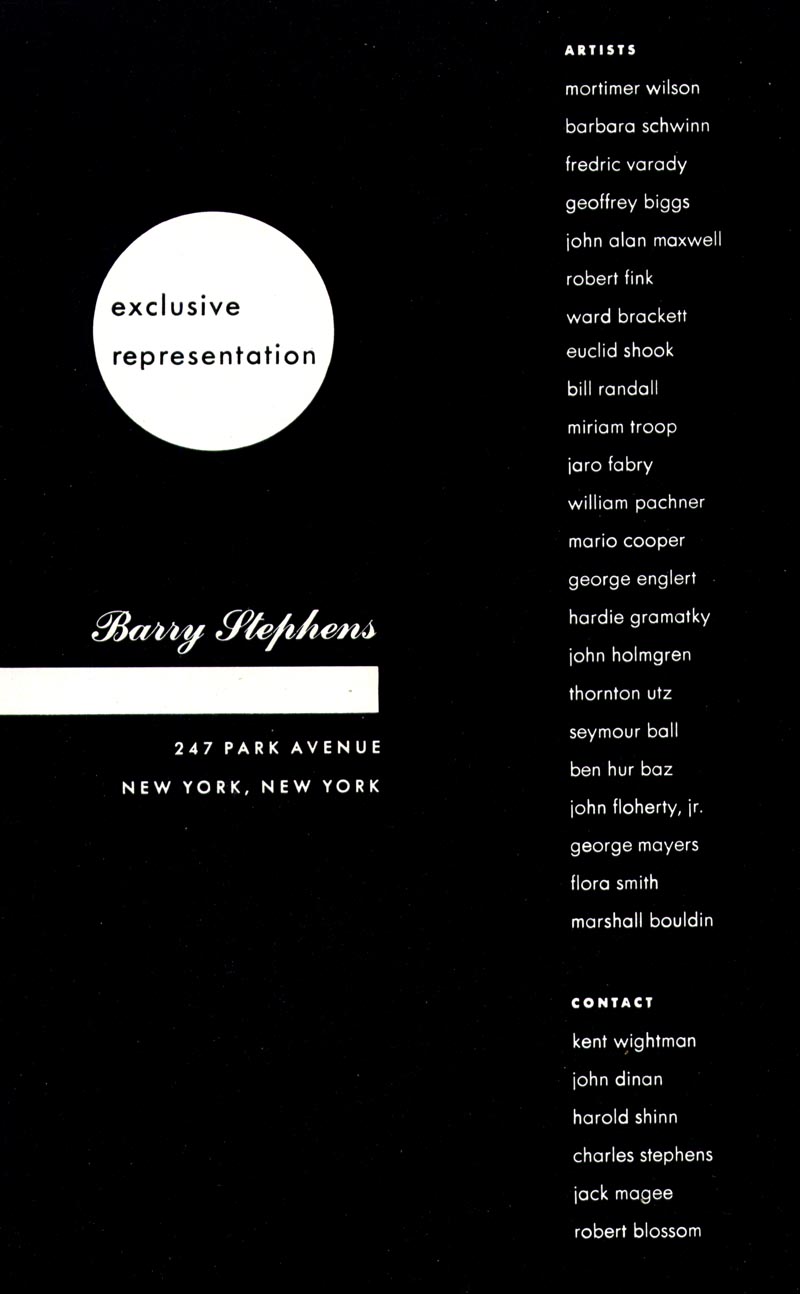
... so some very exciting things happened to me at that time!
This was long before I really knew too much about art history, but one of the places I used to pick up art was at 51 West 10th St., which happened to be the building where William Merrit Chase had his big studio and which John Singer Sargent borrowed and painted in.

A fellow named John Allen Maxwell, who painted pocketbook covers was there and so was Mortimer Wilson Jr.
(Below, a Mortimer Wilson Jr. painting, 1940s)

So here I was delivering paintings and picking them up in these incredible places.
[Joe chuckles] I'll never forget; Barry used to be very generous with the tips and so on. He didn't pay me anything [chuckles] but one of his big illustrators was a fellow by the name of Frederic Varady, a Hungarian artist who was very popular at that time.
(Below, a 1950s spread from Good Housekeeping by Frederic Varady)
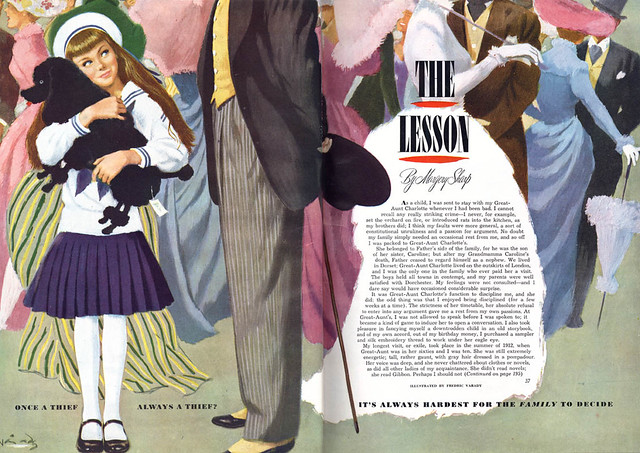
Varady would come into town and Barry would put him up at the St. Regis Hotel, in the penthouse suite. Barry would give me a little envelope to give to the concierge every time I went over to pick up a painting from Varady. One time the envelope wasn't sealed so I peeked inside... it was a $100 bill!
(Below, Frederic Varady, Cosmopolitan magazine, August 1953)

So I gave it to the concierge and went up and knocked on the door. Varady opened the door and here he was in this beautiful velvet smoking jacket.
(Below: Frederic Varady, Good Housekeeping, 1946)
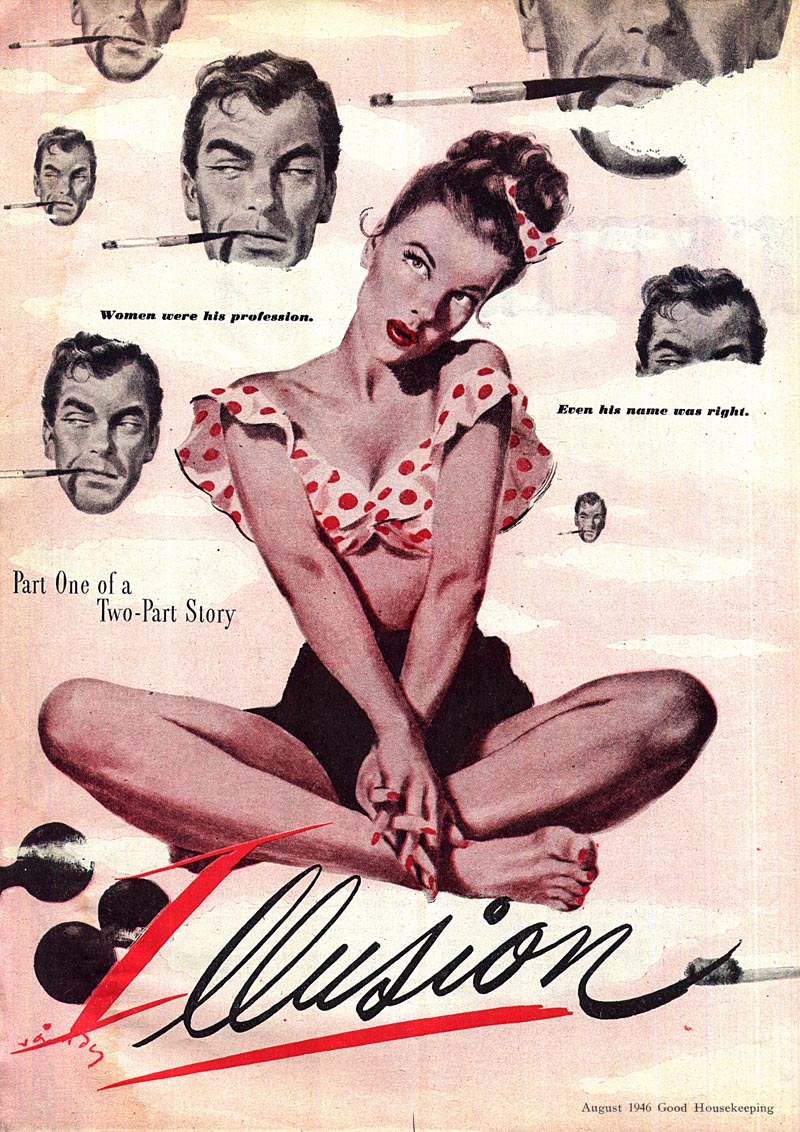
And over his shoulder I see this beautiful blonde festooned on the couch. Right there I said to myself, "I wanna be an illustrator!" [We both laugh]
(Below, Frederic Varady, Cosmopolitan magazine, August 1954)

LP: Now did Barry Stephens have his own art studio where you would have seen artists at work?
JB: No. Most of the artists had their own studios... and most of the ones I saw would come in from Chicago, where Stephens had another office, on the 20th Century train (that was the big one of the day!) and stay for a couple of days.

You know, thinking back on it I can't believe the balls that I had for a 17-year-old kid!
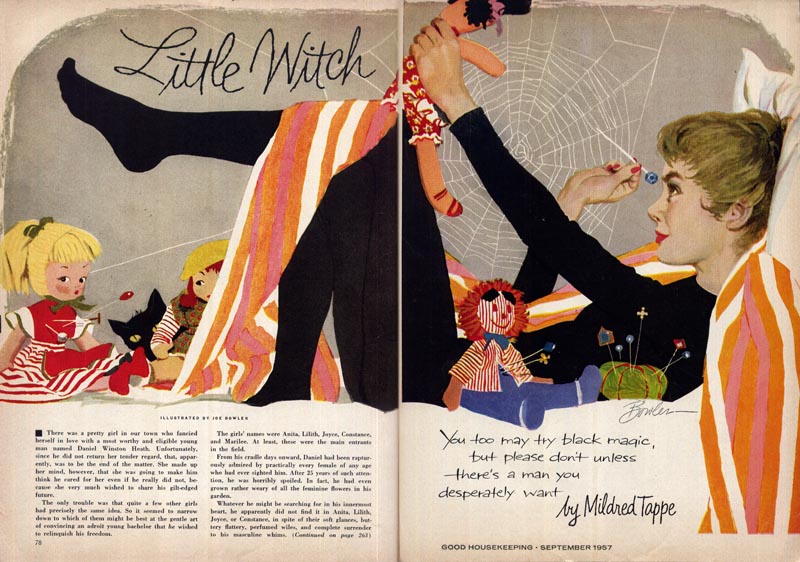
One night, everyone was going home... and my job was to make sure all the illustrations were flapped and matted and put in their proper spots on the shelves. And there was one piece by Varady left out and one of the salesmen said to me, "Don't forget to put that away." I said, "Ok." I was the last one there... I was gonna lock up, and I very carefully wrapped it up and took it home with me. I was staying with my grandmother in Port Washington and I had my paints there.
(Below: a Frederic Varady illustrated ad from 1946)
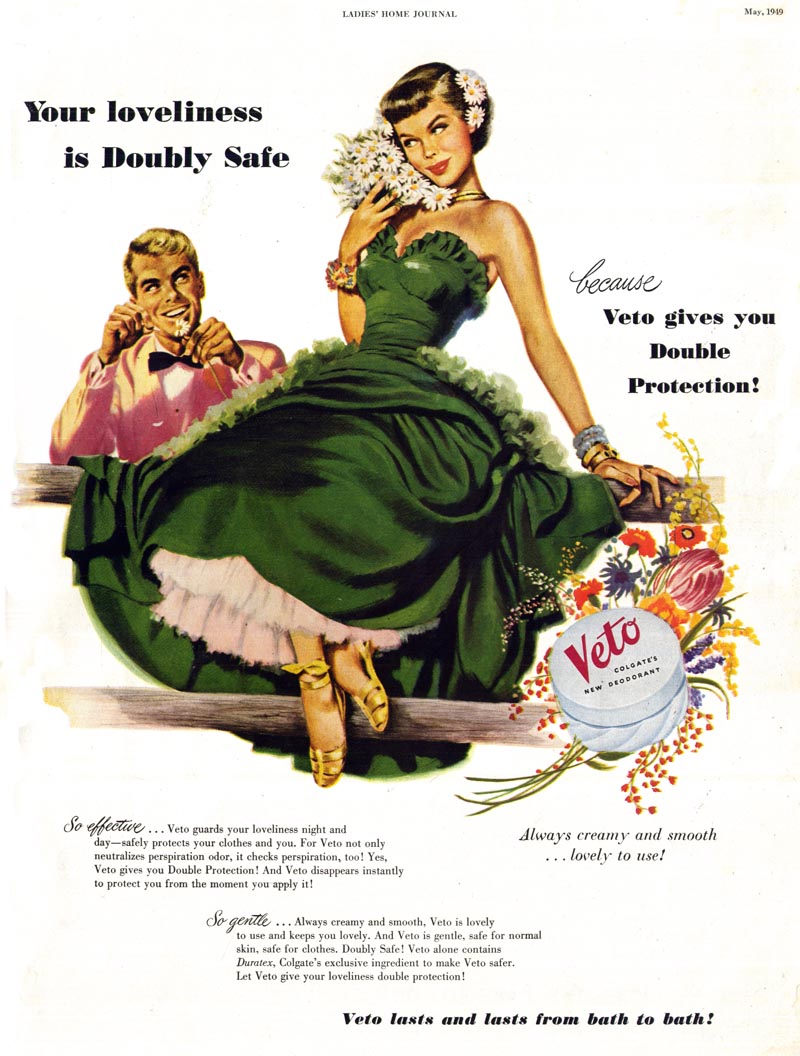
I took this Varady illustration home and I stayed up all night and I copied the damn thing. I don't think I slept a wink. The next morning I went in to the office and I put my copy up on the table. Then I sort of ho-hummed around until one of the salesmen came in. He looked over and said, "Joe! I told you to put this Varady away!" [Laughter] That really made my day. The salesmen weren't the brightest art people in the world... I looked at it years later and I could have told it wasn't a Varady. But I wanted to test myself... see if I could fool them... and I felt like I'd won that day.
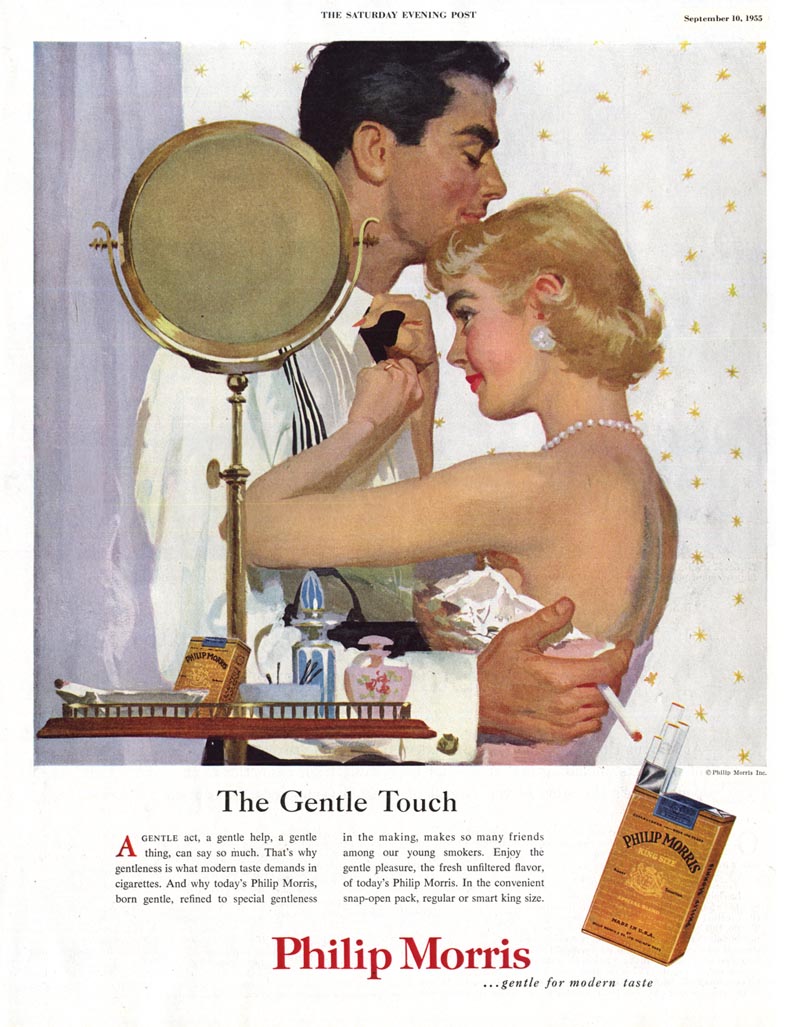
I was making $18 a week... I was living at home and the Pennsylvania Railroad raised the fares. So I went in one day and asked for a $2 raise to cover the cost. Barry put his arm around my shoulder and said, "Joe, I think you've learned enough here. I think it's time for you to move on. He wouldn't give me a two-dollar raise!"[Laughter]
But talk about a guy with luck: unbelievably, a friend of our family had a friend who was an art director for Kling Studios - the New York office!

So I went up to see him and he said, "Yeah, I'll give you an apprentice job."

They had about four or five artists there and I was given a drawing board right in the studio and I sat there and watched to see how they did it.
(Detail from a Kling Studios trade magazine ad, 1951)
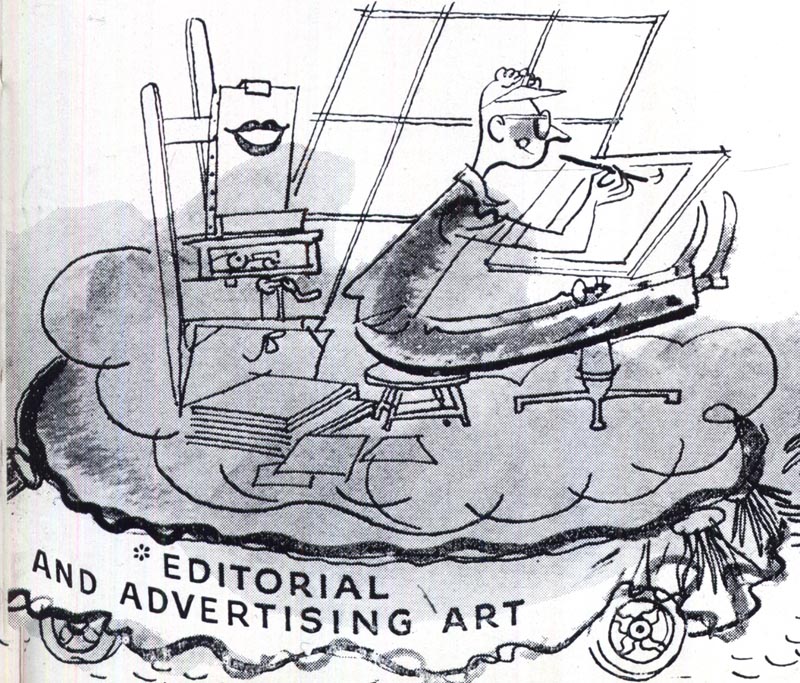
I did some little samples and the salesmen started to take them around and I got my first professional work there. It was for Redbook, it was a couple of little black & white medical spots for a feature they ran every month.
LP: How did it feel to get that first professional assignment?
JB: Oh, it felt fantastic! Next I got a double page spread in True Detective or something... that was my first big one.
LP: Were these early jobs all line art?
JB: No, they were black & white, but painted with designers colours.
LP: Did they pay you a salary at Kling or did you split a commission with them?
JB: They paid me a salary and just absorbed the assignment fees into general studio revenue, I think. They paid me about $35 a week I think, so that was a pretty big step up from $18 at Barry Stephens. I was only there for less than a year though, because they closed. The salesmen would go to lunch around 10 o'clock and take a 3-hour lunch and get plastered. I never saw so much drinking in all my life!
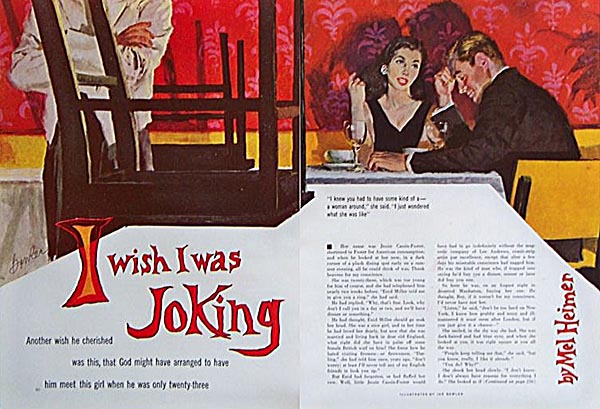
So they closed and I thought, "Oh boy, I'm outta luck."
But as I said, I don't know where I got the balls, but I figured, well, there's the Cooper Studio, the biggest, most famous art studio in America... I'll go try there first.
So that's were I went!
Continued tomorrow
* to see recent works by the artist, visit Joe Bowler's website
* Some of today's images are from ondiraiduveau's Joe Bowler set on Flickr.
Leif-
ReplyDeleteGreat interview! Interesting to see how different the illustration business was back then.
I love it. Can't wait till tommorrow
ReplyDeleteWhat a scoop. Way to go. And he's such a great story teller.
ReplyDeleteThank you for the interview, love the story about the homemade copy.
ReplyDeleteOne of the best features you've run. Looking forward to the next instalment.
ReplyDeleteGreat interview Leif, I'm excited!
ReplyDeleteLeif, I loved reading article on Joe--- I have been familiar with his work for a long time since my long ago high school mentor worked at cooper studios and gifted me a original Bowler painting. I have been carrying around the masonite masterpiece with me around the country for decades--So to hear his first hand account of his career is fantastic--great interview--Thank you!
ReplyDelete